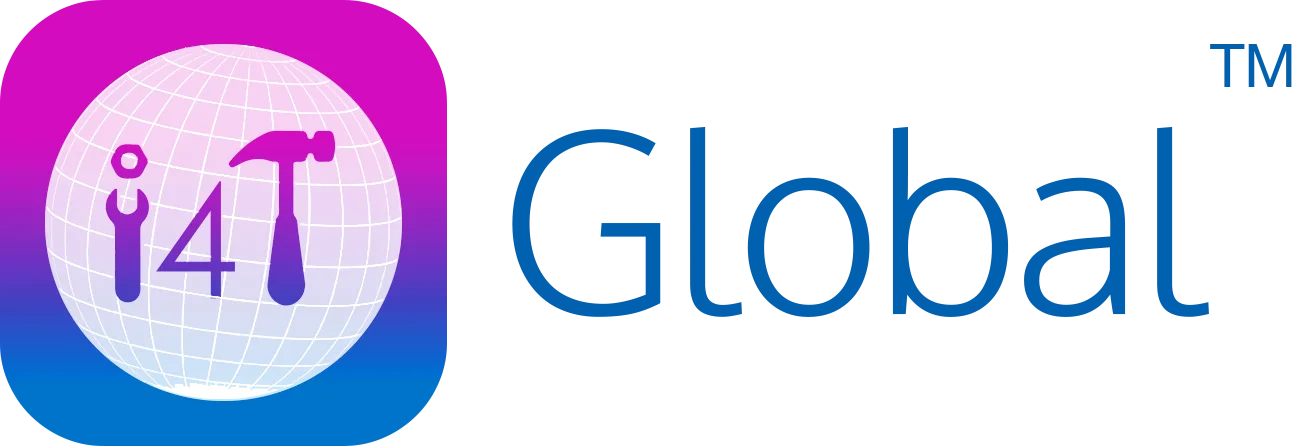In today’s fast-paced field service industry, managing jobs efficiently is crucial for success.
Job sheet apps have transformed tasks by simplifying processes and boosting productivity. But with so many options available, how can you choose the right app for your business?
This blog post offers a simple and practical guide to help you select a job sheet app that meets your field service needs. Whether you are a small business owner or an experienced manager, our tips and insights will help you to make a well-informed decision. We’ll cover everything from understanding your requirements to evaluating key features such as usability, customization, and integration capabilities.
By considering these essential factors, you can choose the perfect work order app that is suitable for your business requirements. Are you ready to take your field service management to new heights? Then, let’s dive in.
Why choosing the right job sheet app is important for field service operations teams

Improves efficiency: Choosing the right work order app for field service operations teams is crucial to improve efficiency and productivity. Field service teams constantly move, handle various tasks, and serve different customers. An effective job sheet app simplifies their work, and optimizes resources and processes, to meet project deadlines.
Streamlines workflows: The right app streamlines workflows by digitizing and automating manual tasks. Field workers can create, assign, and track jobs seamlessly within the app. This eliminates the need for paperwork, reduces errors, and saves time. With streamlined workflows, field service teams can complete tasks more efficiently and focus on providing exceptional service.
Provides real-time updates: Further, job tracking software provides real-time updates and facilitates communication among field workers, dispatchers, and office staff. Field workers can update job statuses, share progress, and receive essential notifications instantly. This real-time communication improves coordination, enables quick decision-making, and ensures everyone is on the same page while improving efficiency. This makes field staff management simpler.
What should you consider when choosing a suitable job sheet app
Let’s face it, investing in software could be a significant cost for a business. Especially if it has a limited budget. Therefore you should choose the best software in the market which is suitable for your business. Here are some factors you should consider when choosing a work order app for your field service business.
1. Understanding your field service requirements
First, identify your specific field service requirements and workflows. Consider the size of your team, the types of jobs performed, and specific features needed to streamline your operations. You should also evaluate existing challenges and pain points to identify the areas where a work order app can add value.
2. Core functionality and features
Have a clear idea about the core features a work order app should possess. These features can include creating, assigning, and tracking jobs, capturing customer information, generating invoices, etc.
Then, assess the app’s ability to handle complex job requirements like scheduling, and dispatching. You should also look for features like time tracking, inventory management, offline mode, and GPS tracking, which can enhance productivity and field workers’ accountability.
3. Ease of use and user experience
Evaluate the user interface and overall user experience of the app. It is better to consider the app’s ease of navigation and responsiveness across different devices. It would help if you looked for features like drag-and-drop functions, customizable workflows, and clear visualizations that improve user experience and minimize training time.
4. Customization and scalability
Determine the level of customization the app offers to match your unique business requirements. Then, assess the app’s flexibility in creating custom forms, templates, and reports. It would be best to consider the app’s scalability to accommodate future growth and changing needs.
5. Integration capabilities
Assess the app’s integration capabilities with other essential tools like customer relationship management (CRM), accounting, or project management software. Check if the app supports data syncing and allows seamless collaboration between teams or departments.
6. Security and data privacy
It would be best if you prioritize the security of your data and customer information. Therefore assess the app’s security measures, such as encryption, user access controls, and data backup procedures. You should also check if the app complies with industry standards and regulations.
7. Customer support and training
Evaluate the app provider’s customer support options, including availability, response times, and support channels. Check if they provide comprehensive training materials, tutorials, or live training sessions to ensure a smooth transition. It is better to look for user reviews or testimonials to get an idea about customer support and satisfaction.
8. Pricing and return on investment (ROI)
Consider the app’s pricing structure, whether it’s a one-time purchase, subscription-based, or requires additional fees for advanced features. Evaluate the app’s potential return on investment by assessing its impact on productivity, efficiency, and customer satisfaction.
Identifying pain points and areas for improvement in your current job sheet management processes
Does your current job sheet management process have pain points and areas of improvement? Then you should identify them and seek remedies immediately to avoid negative impacts. Here are some tips that you could use to identify such areas without any further delay.
- Gather feedback from field staff
- Conduct interviews or surveys with your field workers and staff involved in the job sheet management process.
- Ask them about their experiences, challenges, and frustrations with the current system.
- Inquire about specific pain points they encounter during job creation, assignment, tracking, reporting, or communication.
- Analyze historical data and metrics:
- Review past job sheet records and performance metrics.
- Identify recurring issues, delays, errors, or bottlenecks in the process.
- Look for patterns or trends that indicate areas of improvement.
- Seek customer feedback:
- Engage with your clients by interacting with your field workers and the job sheet management process.
- Ask for feedback on their experiences, including delays, miscommunications, or dissatisfaction.
- Inquire about their expectations and any specific requirements they have for job sheet management.
- Consider industry best practices:
- Research industry best practices and benchmarks for job sheet management.
- Compare your current process against these standards to identify gaps and areas where you can improve.
What are the objectives and goals of implementing a job sheet app
There are various benefits of implementing a job sheet app. On the other hand, businesses use such apps to achieve various goals and objectives. Here are some of the most common goals and objectives you can achieve by using a sophisticated app.
- Streamline field service operations
- The primary objective of implementing the app is to streamline field service operations by digitizing and automating manual processes.
- The app should enable efficient job creation, assignment, scheduling, and tracking, reducing paperwork and administrative tasks.
- The goal here is to optimize resource allocation, minimize downtime, and improve overall productivity.
- Enhance communication and collaboration
- The app should facilitate seamless communication and collaboration between field workers, dispatchers, and office staff.
- Real-time updates, notifications, and messaging features should enable efficient coordination and improve response times.
- The goal is to improve information sharing, minimize miscommunication, and enhance teamwork.
- Improve efficiency and productivity
- Implementing job tracking software should increase efficiency and productivity by eliminating manual data entry and reducing errors.
- Workflow management with automated job creation, standardized templates, and streamlined processes can help field staff to complete jobs more efficiently.
- The goal here is to optimize resource utilization, reduce travel time, and complete more jobs in a given timeframe.
- Enhance customer service and satisfaction
- The job sheet app should enable better customer service by providing field staff instant access to customer information, job history, and service details.
- Real-time updates and status visibility allow for proactive communication with customers, informing them about job progress.
- The goal is to enhance customer satisfaction, improve response times, and provide a personalized and professional service experience.
Understanding the core features and functionality of a job sheet app
Job sheet or job tracking software offers many features and functionalities to streamline field service operations. Understanding these can help you make informed decisions when choosing the right app for your team. Further, these functionalities work together to streamline operations, improve communication, enhance productivity, and optimize customer service in field service management.
- Job creation and assignment: This is a fundamental feature of job sheet apps. It allows managers to create jobs, assign them to team members, and monitor their progress. This ensures that tasks are evenly distributed and completed on time.
- Job scheduling and calendar views: With a job scheduling function, managers can schedule jobs based on resource availability, job priority, or location. Calendar views visually represent the assigned jobs, allowing easy tracking and managing of the field service team’s schedule. This optimizes resource allocation and ensures timely completion of tasks.
- Real-time updates and notifications: It provides real-time updates and messages to keep everyone in the loop. Field workers can update the job status, add notes, or attach photos as the work progresses. This ensures everyone knows the latest developments while improving coordination and responsiveness.
- Mobile accessibility and offline capabilities: An excellent app is accessible on mobile devices and facilitates better field force management. This enables field workers to access job information, update statuses, and communicate while on the move. Offline capabilities allow users to work even without an internet connection, ensuring that data can be synced once connectivity is restored.
- Task management, tracking, and status: The task management and tracking feature allows field workers to track the progress of individual tasks within a job. They can mark tasks as completed, update the overall job status, and provide real-time visibility into the status of each task. This helps monitor progress and ensure all tasks are completed on time.
- Customer and job information management: It stores and manages customer information, service history, and job details in one centralized location. Field workers can access this information on-site, view customer preferences, and update job records. Having all relevant information readily available enhances customer service and ensures accurate job completion.
- Resource and technician management: The app facilitates efficient resource and technician management. Managers can assign jobs based on field workers’ availability, skills, and proximity. They can track the current location and status of resources, ensuring that the right technician is assigned to the appropriate job.
- Reporting and analytics capabilities: Reporting and analytics features in the app provide valuable insights into key performance metrics. Managers can generate reports on job completion times, customer satisfaction, or resource utilization. This data-driven approach helps identify trends to make informed decisions, and continuously improve field service operations.
Conclusion
In conclusion, a job sheet app is valuable for field service operations teams. It simplifies processes, improves productivity, and enhances customer satisfaction. However, selecting the appropriate app is crucial to unlocking these benefits fully.
It is essential to understand the features and functions offered by different apps to make the right choice. First, consider your team’s specific needs and dynamics. Then, evaluate reliability, user-friendliness, and compatibility with your existing systems. By selecting a well-suited work order app, you can revolutionize your field service operations and achieve greater success.
Choosing the right job sheet app is an investment in your team's efficiency and productivity, as well as in the satisfaction of your customers.
Don’t hesitate to leap and transform your field service operations with a robust Field Service Management app like i4T Business, that offers powerful job sheet management features. Our clients are delighted with our software and its features. Now you can try it and experience the superior benefits of sophisticated software. Contact us today for a free trial.
FAQs
It’s an app that makes field service operations run smoother by using technology to automate and digitize tasks related to managing jobs. It helps create, assign, track, and communicate tasks efficiently between field workers and office staff.
It improves efficiency, productivity, and customer service by eliminating time-consuming manual tasks. Additionally, it gives real-time updates, enhances communication, and helps manage resources more effectively.
First, make sure you understand the specific needs of your field service operations. Then, look at essential features like creating jobs, scheduling, getting real-time updates, and being able to work offline. Also, think about how easy the app is to use if you can customize it to your liking. Further check whether it integrates with other tools you use, and what kind of customer support is available.
Many job sheet apps are made to be used on mobile devices. This lets field workers access and change job information, keep track of tasks, and communicate on the go.
When choosing a job sheet app, it’s crucial to find one that focuses on keeping data safe. This means using encryption to protect information. It should let you control who can access the app, and make regular data backups. You should also pick an app that follows the rules and standards set for your industry to make sure sensitive information is kept secure.
Hot off the press!

With our cutting-edge technology and in-depth knowledge of how the Field Service Management sector operates, the i4TGlobal Team loves to share industry insights to help streamline your business processes and generate new leads. We are driven by innovation and are passionate about delivering solutions that are transparent, compliant, efficient and safe for all stakeholders and across all touch points.




